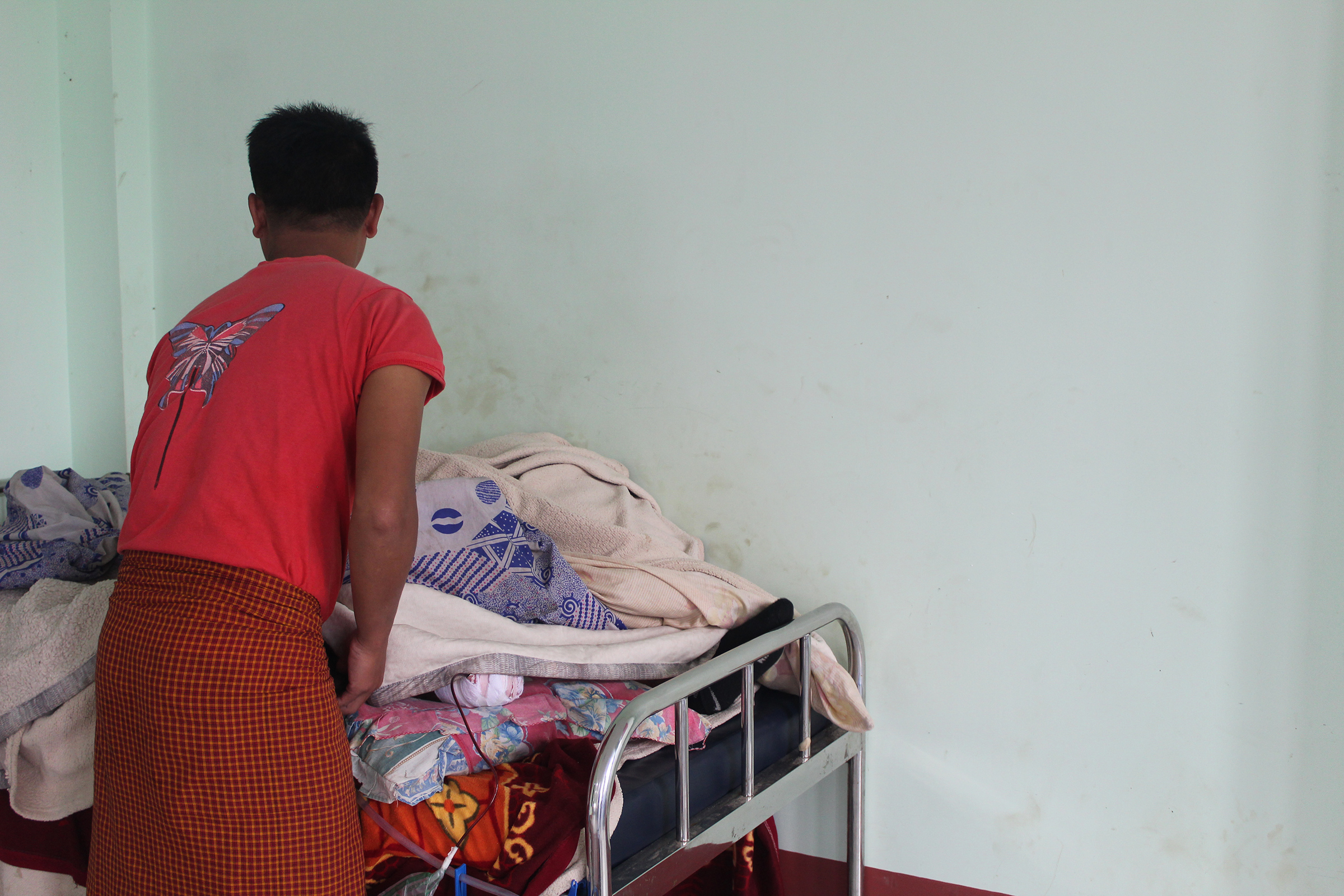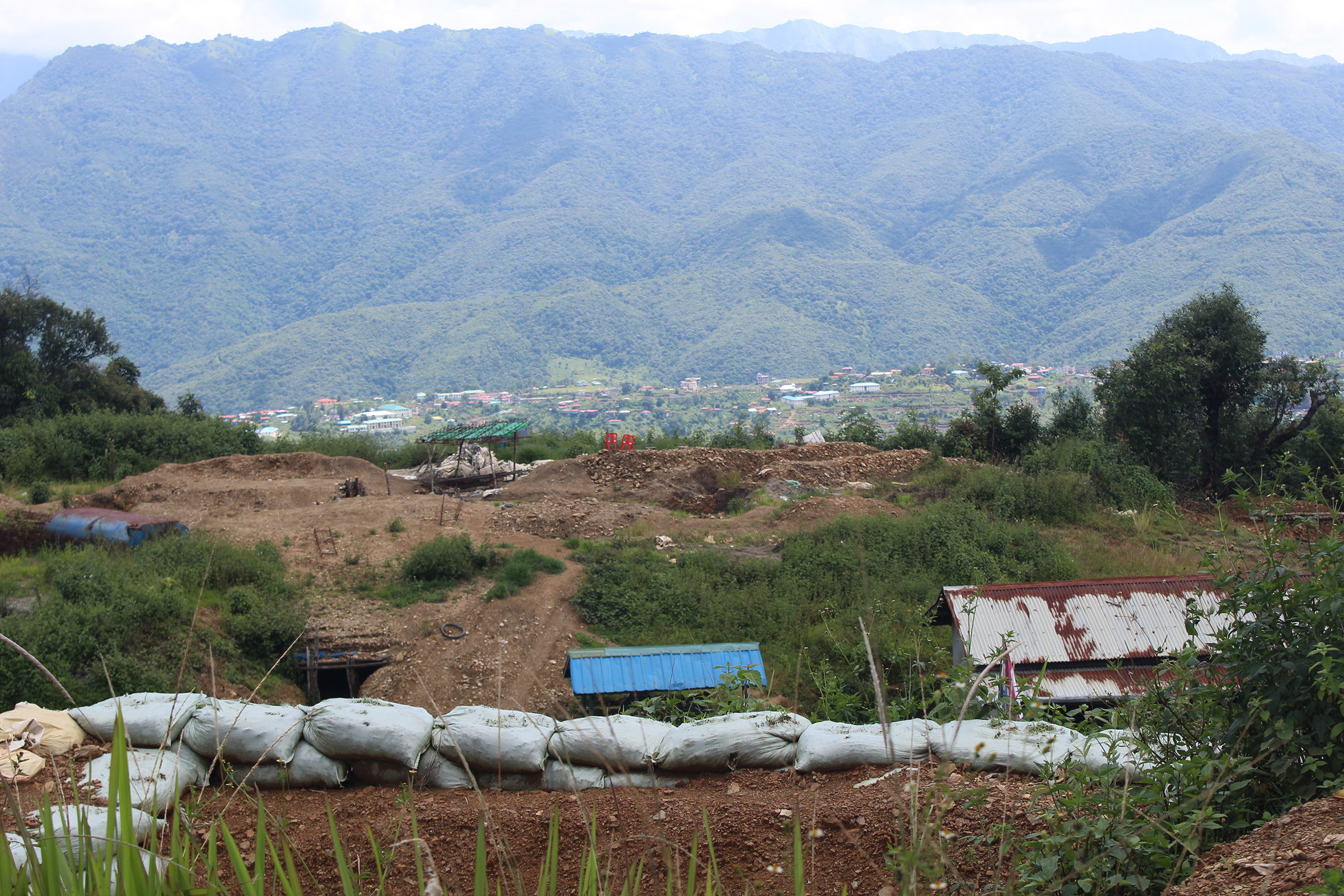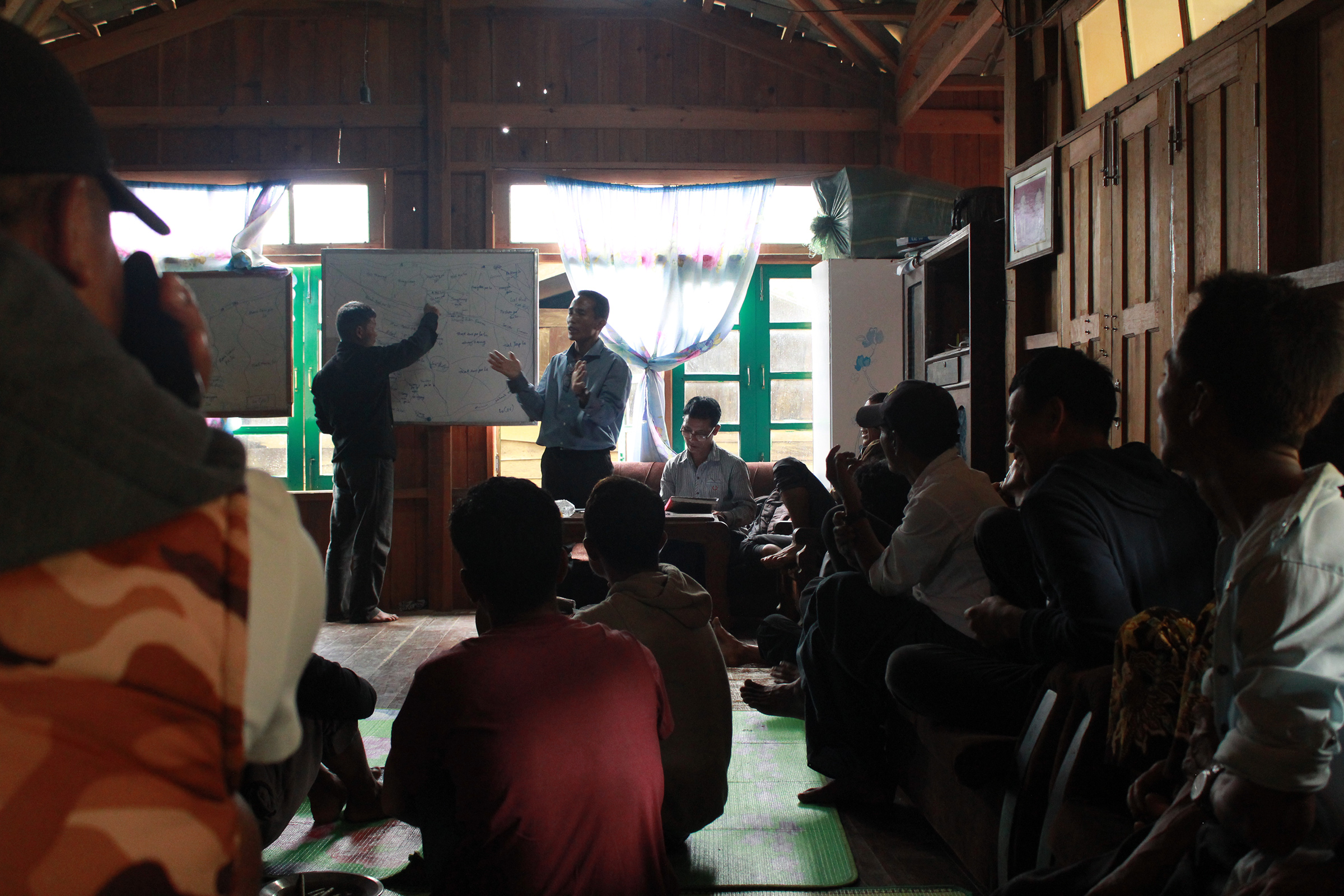

When Myanmar’s military staged a coup on Feb. 1, 2021, Cung Hlei Thawng was just a 29-year-old living with his mother in Thantlang, a picturesque town in the mountains near the country’s northwestern border with India. But by April of last year, the former community worker had become the commander-in-chief of the Thantlang township branch of the Chinland Defense Forces (CDF), one of hundreds of armed revolutionary groups which emerged across the country in the wake of the coup.
Swept up in the pro-democracy movement in the days after the coup, Cung Hlei Thawng joined millions in peacefully demonstrating against the military. And when the military’s bloody crackdowns tipped the country toward all-out war, he was among the early waves of young people to head to the forest and take up arms.
By September 2021, the CDF-Thantlang was rapidly gaining ground on the junta, which retaliated with indiscriminate attacks. Military forces killed seven civilians with gunfire and artillery strikes and set fire to the town of Thantlang more than two dozen times over the ensuing year, burning down more than 1,200 buildings and displacing its entire population of 10,000, according to the Chin Human Rights Organization.
Among the houses that burned was Cung Hlei Thawng’s, built just months earlier with money his father had carefully saved before passing away in 2018. “The people never imagined this kind of thing would happen,” said Cung Hlei Thawng. “No one could live in the same place with the military anymore.”
The attacks were determined by the Washington Post to be part of a “premeditated campaign of arson and killings” targeting civilians in Chin State, and they add to a growing body of evidence of the military’s human rights atrocities, which continue unabated.
Read More: ‘The World is Doing Nothing.’ A Myanmar Artist’s Daring Mission to Tell the Story of His Father and Their Country’s Suffering
But rather than crush the people’s will to resist, these tactics appear to have had the opposite effect. Over the past year, groups relying largely on small arms and self-made weapons have managed to turn the tables against a military armed with heavy weapons supplied by Russia and China. Observers are starting to suggest the military’s “dominance is being challenged” and that the junta is “on the backfoot.” The Special Advisory Council, a group of international experts who advocate on behalf of the people of Myanmar, recently published a report that asserted the conflict’s trajectory “currently favors the democratic revolution” and that the junta “may well not survive through 2023.”
The National Unity Government, Myanmar’s anti-military opposition made up of elected parliamentarians ousted by the coup as well as ethnic leaders and activists, is vying for international recognition as the country’s legitimate government. This September, it announced that revolutionary groups have claimed effective control over more than half of the country. As they continue fighting for control over major cities and towns, these groups have established their own governance systems in what they call “liberated areas,” where they strive to address the humanitarian needs of the country’s internally displaced—now numbering more than 1.4 million—and provide services including healthcare, education and law enforcement to the general public.

A member of the Chin National Army tends to a 19-year-old comrade whose leg was amputated the night before, in August, after he stepped on a landmine. The amputation was conducted by medical volunteers at an abandoned government hospital now run by the public administration of the Chinland Defense Forces-Thantlang.
Emily Fishbein
Read More: Sanctions Won’t Hurt Myanmar’s Brutal Leaders, Activists Say. Here’s What Could
Perhaps nowhere has the power of resilience been more dramatic than in Thantlang, once a symbol of tragedy and now a stronghold of the resistance. By last November, just two months after the first arson attacks, the CDF had reclaimed control over 51 of the township’s 88 villages; it is now governing all of them and providing humanitarian support to civilians who have been displaced by the fighting.
But the battle for control of the township’s namesake town is still ongoing. The CDF-Thantlang continues to fight the military despite being heavily outgunned and having lost 20 members since its establishment. “Our determination is the core of the battle,” said Cung Hlei Thawng.
Last year’s coup not only unseated Aung San Suu Kyi’s National League for Democracy party, it also erased a decade of democratic reforms and extinguished the freedoms and opportunities that the country’s youth had only begun to experience. Within days, people from diverse backgrounds came together in a groundswell of resistance.
Read More: Myanmar’s Military Didn’t Just Overthrow Aung San Suu Kyi’s Government. It’s Cracking Down on All Forms of Dissent
Cung Hlei Thawng, who had campaigned for a Chin ethnic party and not the National League for Democracy in the November 2020 elections, organized some of Thantlang’s first nonviolent protests.
“The military coup was unjust, so after that, it didn’t concern parties at all anymore,” he said. “Those of us who rejected the coup were in agreement.”
Military forces began firing live rounds into crowds of protesters in other cities just weeks after the coup, but Cung Hlei Thawng and his fellow protesters in Thantlang kept demonstrating. They established a neighborhood night watch in response to increasing house raids and arrests, and they elected Cung Hlei Thawng as leader. Lacking alternative means of protection, he guarded the homes of dissidents and striking civil servants with a slingshot.
But by the end of March 2021, the number of unarmed protesters fatally shot by military forces nationwide had risen to hundreds, and Thantlang’s youth resistance decided that they needed a new plan.
“We realized that we security personnel ourselves weren’t safe anymore,” said Cung Hlei Thawng. “We began discussing that it would be better if we started holding guns.”

Lookout from a Chinland Defense Forces-Thantlang camp onto the town of Thantlang, where Myanmar military forces have committed more than 2 dozen arson attacks since September 2021, destroying more than 1,200 buildings and displacing all of its 10,000 residents. Today, the town remains a frontline of the fight for control over the township.
Emily Fishbein
Read More: ‘I Can Get Killed.’ A Leading Activist Talks About Her Role in the Fight Against Myanmar’s Junta
Cung Hlei Thawng and three others drove their motorbikes for five hours along winding back roads to avoid military checkpoints, until they reached the headquarters of the Chin National Front (CNF), an ethnic political organization that has been fighting for self-determination since the 1980s. At the time, the CNF was heeding a 2012 ceasefire with the military, but the four young men were able to train with the reserves of its armed wing, the Chin National Army (CNA). Two weeks later, equipped with some basic skills, a few explosives and an airgun, they returned to the outskirts of Thantlang town and established a camp in the forest.
Within a month, they had grown to a force of around 40 and expanded their arms supply to a few dozen traditional hunting rifles and some homemade hand grenades. On May 5, a dozen men with rifles, known as tumee guns, that needed to be reloaded between shots embarked on the group’s first mission: to intercept a military convoy.
“We just went out there knowing that we could each fire five bullets with our tumee guns, and that some of us could only fire three bullets because sometimes the bullets got stuck,” said Cung Hlei Thawng.
The group killed two soldiers and injured ten, while suffering only two injuries on their side. Cung Hlei Thawng said the operation proved the CDF-Thantlang’s mettle to the CNA, who then began to arm the group. “That was the beginning,” he said.
Things rapidly accelerated from there. At the end of May 2021, the CNF formally joined the country’s anti-coup resistance and began openly training, arming and fighting alongside the CDF.
Clashes steadily increased day by day, and by the middle of last year, Myanmar’s northwest had become a key battleground in the country’s fight against the junta, with Thantlang township at the epicenter.
At the CDF-Thantlang camp, adrenaline was running high. By then, the group was regularly engaging in combat and had grown significantly in strength and numbers. “Some people were searching for strategies on YouTube,” said Cung Hlei Thawng. “We were training ourselves.”
Last September marked a turning point. Resistance fighters made significant gains. On September 11, joint forces from the CDF and CNA overtook a strategic military camp, killed 12 enemy soldiers and seized a large cache of weapons.
But the gains came at a heavy cost: the military retaliated with indiscriminate gunfire in residential areas. “The whole town of Thantlang was afraid,” said Cung Hlei Thawng. “There was the sound of bombs and bullets and some people couldn’t stand it anymore.” Thousands evacuated, some to nearby villages and others to neighboring Mizoram, India.
Fighting resumed on September 18, when allied CDF-Thantlang and CNA forces claimed to have inflicted more heavy losses on the military. The next evening, military forces fired artillery into Thantlang town, and the main street went up in flames.
When Cung Biak Hum, a 31-year-old pastor, rushed to try to extinguish the fires, junta soldiers gunned him down and then cut off his ring finger. The entire town fled within a week, but for Chin people, who are overwhelmingly Christian, the murder and dismemberment of a respected member of their community further solidified the will to resist.
“We couldn’t face the news that the military killed him,” said Cung Hlei Thawng. “It gave more power and energy to our revolution.”

A village in Thantlang township holds an annual meeting on Sept. 4 to distribute farmland to each household for the year ahead. This year, they redistributed the land to include displaced people from Thantlang town who are now sheltering in the village.
Emily Fishbein
In a nearby village on a Sunday morning this September, almost exactly a year later, another pastor, Thawng Ceu Thang, delivered a sermon to a full church of villagers and displaced people from the town of Thantlang. “They might burn down our houses, but we should not lose heart,” he said. “Let us fight together against dictatorship.”
Today, both CDF and military forces are stationed in the town of Thantlang, and no civilians have yet been able to return. But over the past year, the CDF-Thantlang has driven military forces out of the township’s surrounding villages and established its own governance system, with strong support from local communities.
“We need to help each other in any way we can, share with each other what we have, and fight as much as we can until we win,” said a 24-year-old platoon commander, who asked to remain anonymous due to concerns of military retaliation against his family.
Members of the public are doing their part. Villages that were already some of the country’s poorest have hosted displaced families. “Our living expenses have increased a lot and it’s hard to bring in enough food,” said Thang Hre, the administrator of a village where households lack 24-hour electricity, and where daily subsistence has become significantly harder since the coup. Still, the village of 120 households has taken in more than 80 displaced families, and other villages across the township are doing the same.
They are also feeding and housing hundreds of people serving with the CDF-Thantlang’s public administration, who in turn face the immense task of providing critical services which had largely collapsed after the coup. “We can’t separate ourselves from the people. We are protecting them and they are protecting and supporting us,” said one of the leading members of the CDF-Thantlang’s public administration who also requested anonymity.
The administration is run entirely by volunteers, with funds raised primarily from the Chin refugee diaspora covering critical supply needs. Most of the volunteers were students or recent graduates when the coup happened. “I am learning and working at the same time,” said a 25-year-old former law student who also requested anonymity. He now manages security and investigates criminal cases across ten villages and is one of more than 70 volunteer police officers under the CDF-Thantlang’s public administration.
Facilities are also limited, and many services are now operating out of abandoned or repurposed government buildings—including a fire station now serving as a courthouse. From behind a plywood table adorned with a pleated cloth, a Bible and a copy of the Myanmar penal code, another 25-year-old, who goes by the nickname Cung Zaathang and had just begun his career as a lawyer before the coup, has delivered verdicts on more than 20 cases, including rape and murder, using a combination of Chin customary law and existing Myanmar laws.
The CDF-Thantlang’s public administration has also restarted medical services which were in disarray, and is now running two hospitals and seven clinics. At the largest of these, a former government hospital reopened under the CDF last September, a volunteer doctor, medical student and three nurses have since treated some 2,600 outpatients and conducted more than 200 operations.
“There is no big senior behind me [and] I wasn’t at the senior level yet,” said Amos Dawt Za Hmung, the doctor, who is 28 and finished his master’s of surgery degree a month before the coup. He is now the leading medical practitioner across the township and regularly operates on critical conflict-related injuries. “I am always living with the worry about patients that I operated on and thinking about whether they will be well the next day,” he said.
The coup in February last year resulted in mass student and teacher boycotts amid a broader civil disobedience movement, leaving classrooms across the country more than 90% empty when schools opened in June 2021. All schools across Thantlang township were shuttered, and military-imposed internet shutdowns across much of Myanmar’s northwest beginning last September left students unable to learn online. But in January, 51 village schools in Thantlang township reopened under the public administration, enabling more than 7,000 students to go back to class.
“Most of the houses have been burned down by the military coup. That is our sacrifice. So it is our responsibility to struggle in building our nation [and] our Thantlang area,” said Salai Cross Thang, a former public school headmaster who joined the education strikes and now heads the education department under the public administration.
As the CDF-Thantlang continues to build up its public services, it is also continuing to battle the military for control over the town of Thantlang in order to “liberate” the entire township.
Cung Hlei Thawng, who suffered injuries to his legs while testing an explosive device in July, plans to return to the front line as soon as he is able.
“My body isn’t back to normal anymore,” he said. But, he added, “I made a promise from the beginning that I wouldn’t stop after one day or one year. I made a promise to never surrender.”
More Election Coverage From TIME

